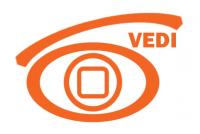V.E.D.I.

IMC Service s.r.l.
Abstract
The project aims to create, in prototype version, an integrated system that allows on one hand to analyze visitors' behavior (anonymously), to obtain information on their visit experience, and on the other to provide them with an instrument innovative support for the use of assets during the visit.
The system takes its cue from the possibility of providing the visitor with a "wearable" device (to be returned at the end) that can be a tablet or a "smart glass" or goggles suitably engineered to provide the visitor with the possibility to access additional contents ( by means of Computer Vision technologies such as "Augmented Reality") when it dwells on the vision of a "good" inside the museum or natural space that is visiting.
The use of the device provided to the visitor, in addition to rendering a service to him in terms of enriching his visit experience, allows the managing body to collect data, in anonymous format, in order to infer information through a behavioral analysis of visitors (through the Computer Vision technologies for the recognition of the environments and objects observed by visitors, and Machine Learning for the analysis of data observed over time) and derive some advantages on the improvement of the proposed offer. The processing of behavioral data with the accurate reconstruction of the routes made by visitors and preferences expressed implicitly with their behavior (interest in a work rather than another measured through visual attention, more or less long stay in a rather that another, etc.) will allow the managing body to better equip the museum (or natural) routes, the info point areas, and will be a tool to verify the appropriateness of the choices made and will eventually provide indications on the implicitly expressed preferences from visitors to improve the quality of the service offered.
Often the museum and natural spaces offer tourists shopping areas where it is possible to buy objects, gadgets, books, copies of the exhibited works, etc. The behavioral analysis can outline, in anonymous and automatic mode, the preferential choices that each visitor implicitly expressed during his visit through the observations made. This ability would allow the managing body to provide a personalized merchandising service for each visitor at the end of the visit, promoting the purchase of products (copies, books, gadgets, etc.) that have strong relevance and familiarity with the interests shown during the visit. Moreover, if the visitor gives consent to receive newsletters about the future services offered, the proposed system would allow the managing body to effectively and effectively inform about the preferences of the users that were collected during the visits.
Finally, the collection of the visitor's visual information, carried out by the "Observation Point" coinciding with the visitor's eyes, allows the managing body to offer a "Memories" service of the visit experience, providing as a gadget that can be purchased in the 'shopping area a digital video recording made automatically from the sequences (snapshot) of works observed during his visit.
The countless possibilities offered by the Computer Vision and Machine Learning technologies, applied to the behavioral analysis of visitor observations, both within museum spaces and in open spaces where cultural and natural assets can be enjoyed, allows the extraction of useful information to managing body to verify the effectiveness of planned activities to provide a better service to visitors. The system will be able to produce reports that can be used on the web or mobile app that will allow KPIs to be evaluated (Key Performance Indicators) in order to have feedback on the validity of the choices made when planning the routes and the works on display.